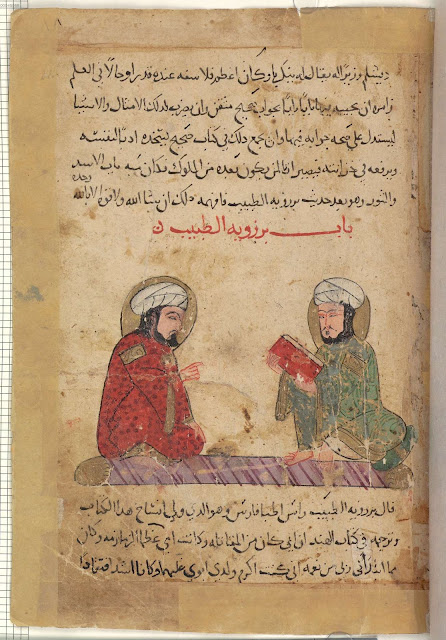 |
| Maya warrior (upper half) and Deity on lower half |
Also known as the Tro-Cortesianus Codex, this fascinating Maya Book is held by the Museo de America in Madrid, Spain. It mainly consists on almanacs, horoscopes, astronomical tables -and even a complete description of the New Year ceremony- used by Maya priests in the performance of their ceremonies and divinatory rituals.
The “bad part” of this codex is a complete description of how to proceed for a human sacrifice to invoke rainfall. It has been demonstrated that the Codex was written before the Spanish conquest and also proceeds from the Yucatán Peninsula. Some of the drawings are similar to the murals found at Chichen Itza, Mayapan and sites on the east coast such as Santa Rita, Tancah and Tulum. (Updated on October 9th: regarding human sacrifices on American precolombine cultures, I forgot to link this post with another codex we presented time ago: “History of Mexico” by Juan de Tovar, 17th Century, that included some rites and ceremonies of the Aztecs like the xocotl huetzi (xocotlhuetzi) ceremony, a human sacrifice...link to post here)
Technical characteristics: 56 sheets painted on both sides to produce a total of 112 pages, on amate paper, folded up in accordion style. It's delicated and not public shown in Spain, because Mayas used a extremely thin layer of fine stucco over the amate paper as painting surface that can be easily damaged (see white areas in the middle of the coloured images on the digitized pages below).
There are 3? additional Maya Codices that survived to our days: Codex Dresde, Codex Paris and Codex Grolier (recently discovered, in 1971; and still under study to determine if its original or false). I will probably complete this post -or create a new one- when I finally can obtain a complete digitized copy of Dresde Codex.
External links, articles and related information about Maya Codices:
- Fundacion para el avance de los estudios mesoamericanos (Foundation to promote Mesoamerican Projects, english version not available). Best link for additional information & deep interest on this matter. They even have a PDF digitized version of the Madrid Codex at FAMSI, divided into 4 blocks... not tested, because I obtained the complete digital facsimil at thepiratebay as safe-verified torrent file (!).
- Article, by Vékony, Atilla (1999). "Mayan Codex Facsimiles" (University of Arizona), link provided. Don't particularly agree with note regarding the "organized book-burnings of Franciscan missionaries"
- Ciudad Ruiz, Andrés; and Alfonso Lacadena (1999). J.P. Laporte and H.L. Escobedo. ed. "El Códice Tro-Cortesiano de Madrid en el contexto de la tradición escrita Maya [The Tro-Cortesianus Codex of Madrid in the context of the Maya writing tradition]". Link to article (tested) here. Best article I could find on internet about this matter (but written in spanish).
- In 1873 J. M. Melgar y Serrano, known for his descriptions of a monolithic Olmec colossal head, published an article which purported to translate a Maya manuscript belonging to Señor Miró. The article showed, somewhat poorly, a copy of an engraving of a drawing of what we now refer to as page 16 of the Madrid Codex, taken from La Ilustración de Madrid, Núm. 29 (March 15, 1871), link here.










































